Delivery time approx. 1 week.
B1

Sound design taking into account the relationship between spatial impression and dynamic range of music, and the physical properties of earphones and headphones.
The clarity of the vocals and each musical instrument is extremely high, overwhelming presence and the feeling of liveliness, as if you were standing in the middle of a live stage.
The sound design took into account the relationship between the spatial impression and dynamic range of the music and the physical properties of earphones and headphones.
By exploring the relationship between spatiality, clarity and dynamic range of music recordings and the physical properties of earphones and headphones, we have learned that deeper music enjoyment can be achieved through target curves and driver design suitable for music recording sound design.
B1 is a model designed with special emphasis on sound proximity and realism. For music represented by animation soundtracks, recordings make the proximity of sound more noticeable. For this type of music recording, B1 is designed to achieve a reproduction that more closely matches the sound balance created by the sound engineer.
AWARD

VGP 2019 SUMMER
characteristics
Sound design taking into account the relationship between the spatial impression and the dynamic range of music as well as the physical properties of earphones and headphones.
The sound design for these models took into account the relationship between the spatial impression and dynamic range of music as well as the physical properties of earphones and headphones.
We have categorised the sound production in music recordings on these two axes: spatial impression and dynamic range.
One way of thinking about this is the perception of distance. In classical and jazz recordings, it is assumed that aspects of spatiality such as sense of distance, width and reverberation are the most important. In rock, pop and many recent animation soundtrack recordings, on the other hand, spatiality is not emphasized as much. It is assumed that there is more emphasis on clarity, which brings the various instruments and vocals to the fore.
Another approach is dynamic range, that is, the change in volume over time. If the dynamic range is large, it is of course possible to use the change in volume over time to achieve a more dynamic expression of the music. However, there are some types of music where recordings with a narrower dynamic range are preferable, so that the individual instruments and voices can appear quite normal before the listener's eye.
The difference between these two ways of thinking is not about which is better, but rather about how music is composed and what is required of it. In classical music, especially orchestral music, the spatial orientation of the instruments is particularly important. String instruments are closest to the audience, wind instruments and percussionists behind them.
If the balance between the spatial orientation and the volume of each group of instruments were to break down, the music would disintegrate. For this reason, this type of music does not require a uniform clarity of sound that allows each instrument to appear before the eyes of the listener.
Even in classical music, a string quartet, for example, would have a narrow dynamic range and the clarity of the individual instruments would be more prominent.In rock and pop music, on the other hand, spatiality is not as important as in classical music, and more emphasis is placed on clarity than on spatiality.
These requirements are very important, especially for listening with headphones and earphones, and implementing appropriate target curves and driver designs has been shown to result in deeper music enjoyment.
enjoyment of music.
In the graph below, musical spaciousness and clarity are shown on the X-axis and dynamic range on the Y-axis. While our E3000 model targets the middle of the graph, the B-Series is outside of this range.
In other words, compared to the E-Series, the B-Series is positioned more as a model for listening to a specific type of music that might captivate you so much that you won't want to be without it. This attraction is typical of the products we make.
B1 is a model that places particular emphasis on the proximity of sound and the sense of reality. In the music represented by animation soundtracks, the recordings make the proximity of sound more noticeable. For this type of music recording, the B1 is designed to achieve a reproduction that is more consistent with the sound balance created by the sound engineer.
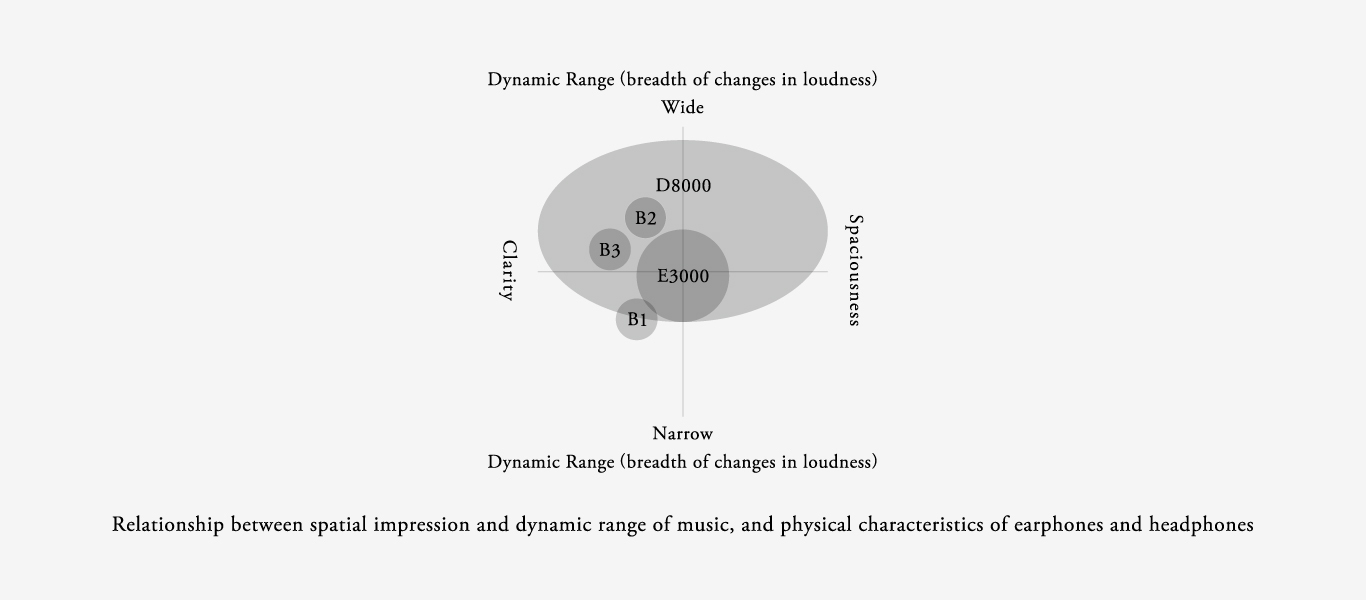
Durable, repairable construction
The two-part design, which can be separated at the front and back, makes the product easy to repair and can be used for a lifetime.

The feeling of a tailor-made fit
The excellent fit of a headphone is determined by the presence or absence of a feeling of pressure. There are products on the market with an ergonomically praised, organically curved surface that should be suitable for placement anywhere in the ear, but because the holding positions for these shapes put pressure on the ear, fatigue occurs over time.
As a result of our renewed return to the basics of our thinking about low-pressure fit, we have arrived at a mindset that includes 2 holding positions and 1 assist position to avoid slipping out.
Similar to a tripod, a stable seat can be secured for each chassis with 3 holding positions.
In the green area of the diagram below (auricle) there is 1 position, in the blue area (tragus) there is 1 position and in the pink area (cavity of the auricle) there is 1 position, for a total of 3 positions.
The tragus secures an earbud to an earpiece in a way that makes it difficult to feel stress even when force is applied, and the pink section adopts a fit method in which the earbud is supported in place by the cavity of the auricle in a way so as not to slip out.
By clearly identifying the contact points, more people's ears can adjust to a fit that does not create a feeling of pressure.
When there is no feeling of pressure, the fit of the headphone is perceived as much more comfortable, and in this way the excellent fit of a seemingly tailor-made headphone is achieved.
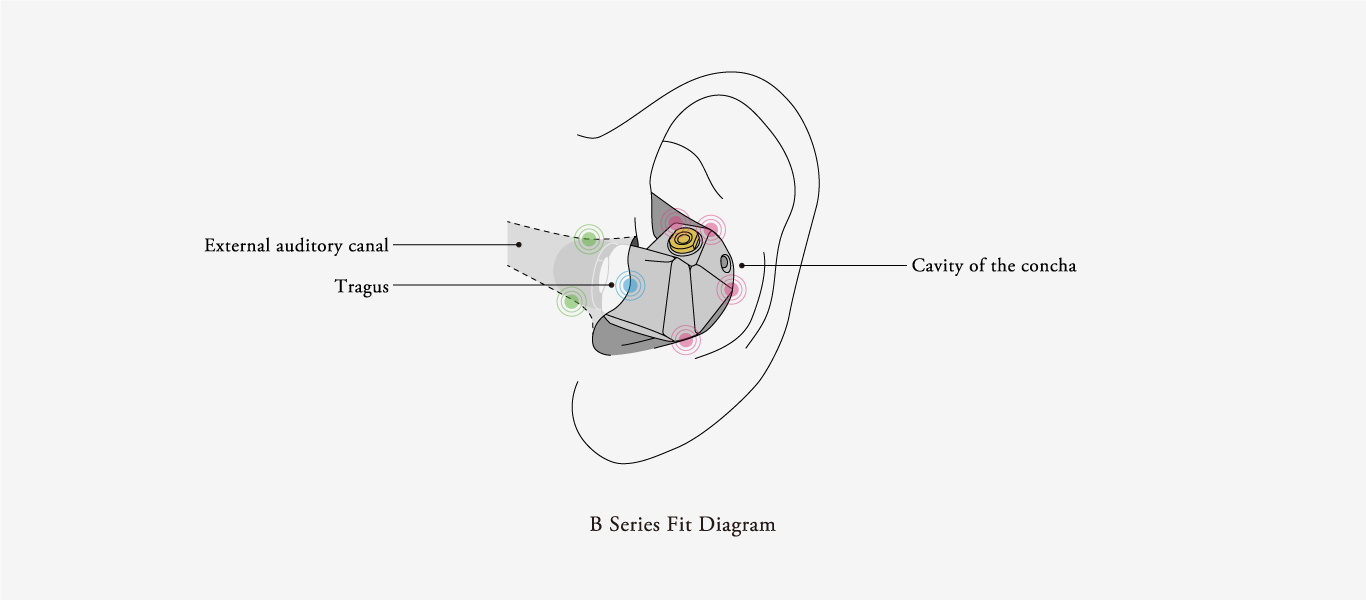
Stainless steel housing using the Metal Injection Molding (MIM) process
MIM is a process in which powdered metal is mixed with a binder to form a resin in the desired shape and then subjected to high temperature sintering to achieve the desired shape.
There is a high degree of freedom in molding the resin into the same shape as the casting, making it possible to achieve complex interior design even with metal.
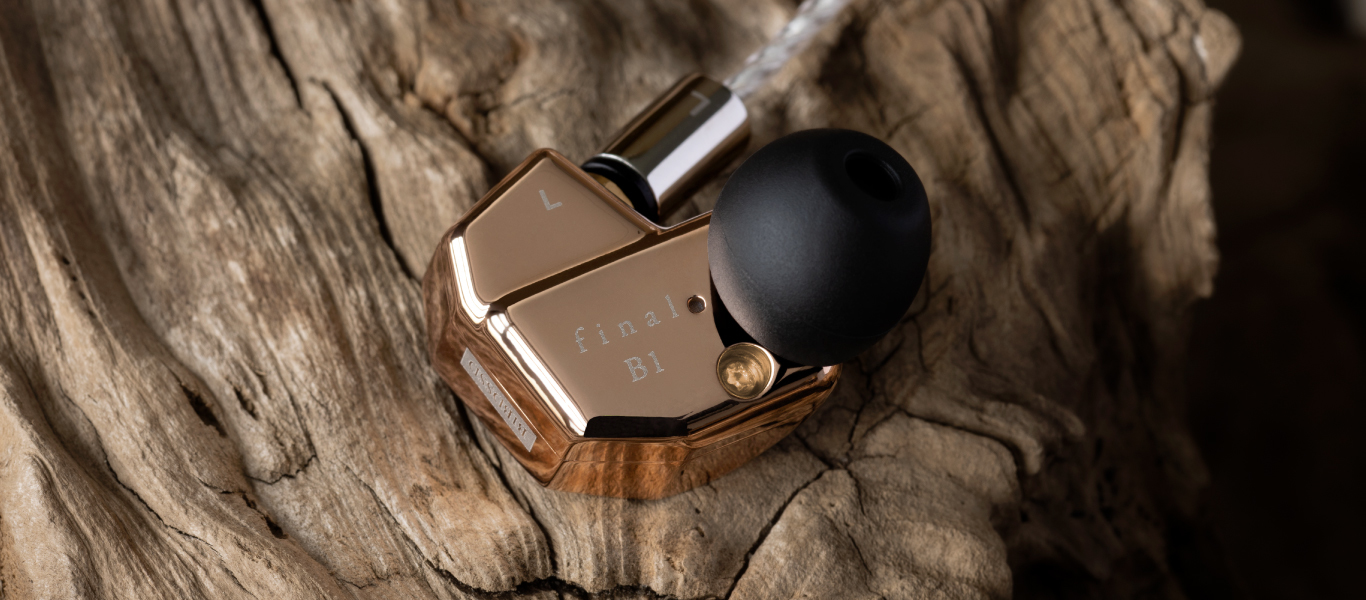
BA+Dynamic Driver Unit
Uses 2 drivers in total: 1 Balanced Armature (BA) driver for the high frequency range and 1 dynamic driver for the bass. There is no division of the frequency range by a network.
MMCX connector & Original high-purity OFC cable with silver coating
The MMCX connector was developed in our company. We used high purity OFC silver coated cables, which provides a wide sound stage.
These jointly developed cables were originally developed by the renowned Junkosha Corporation for the supercomputer “Kei” and are currently manufactured by them because of their high signal transmission speed.
The insulation film is made of PFA, also developed by Junkosha, who used their extensive know-how through the JUNFLON® brand to create the ultimate low-pollution material. The outer tube is made of PVC for maximum flexibility. The user will experience surprising flexibility that both makes the cable extremely easy to use and reduces the likelihood of microphonics.
In addition, the MMCX connector and 3.5mm mini-plug are prone to loosening, so we have far exceeded the regular quality assurance criteria of a 5,000-times bend test by modifying the connector design to withstand more than 50,000 bends.
* Junkosha: Japanese company Junkosha designs and manufactures products such as high-speed coaxial cables, which have the world's fastest transmission speed at 95% of the speed of light, as well as cables for demanding areas such as shipping, aerospace, healthcare and power generation plants.
These special cables require a high level of technology and are based on fluoropolymers. Junkosha cables are often referred to by the brand name JUNFLON® and have earned the great trust of engineers who
require special cables.
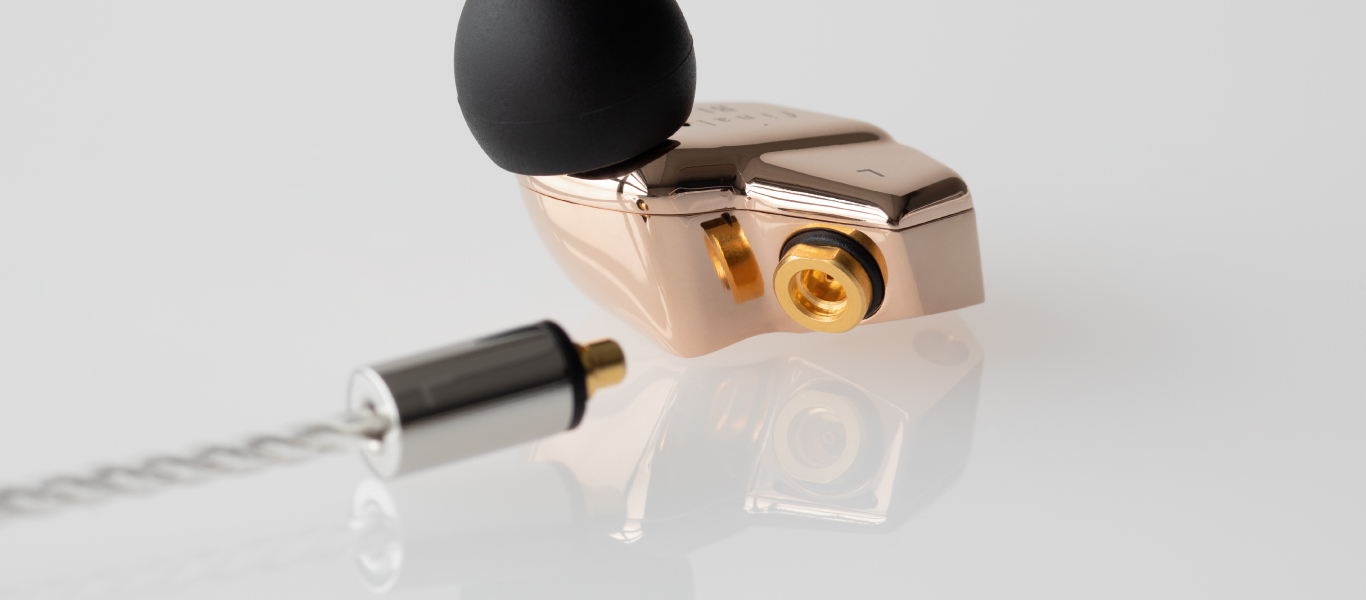
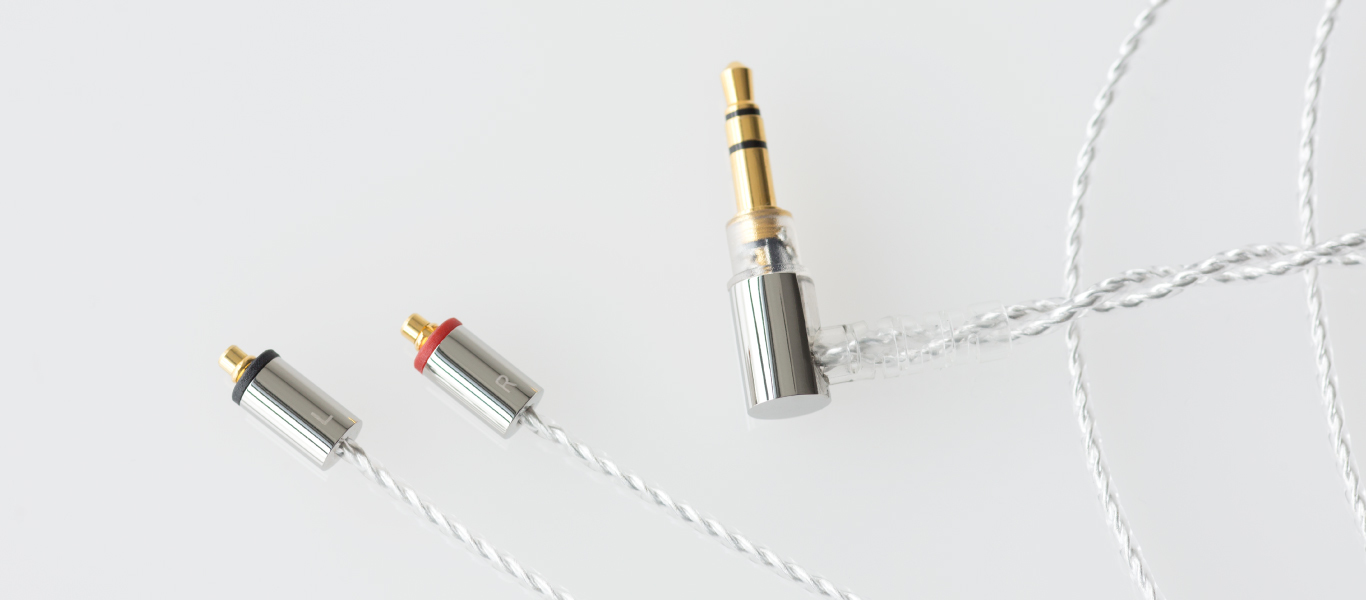
Original ear tips with a color difference between the left and right socket.
Two types of silicone are used for the sound conductor and the earplug that comes into contact with the user's ear, which differ in their firmness. The silicone used for the sound conductor is stiffer than that used for the earplug, and combines both firmness and flexibility through the groove processing. Soft silicone is used for the earplug, which ensures a comfortable fit and high sound insulation.
One of the jacks is gray, the other red; if you pull the earpiece back slightly to check the jack color, you can easily distinguish between left and right, even in places with dim lighting. Since the jack colors of adjacent sizes are different (the gray jacks alternate between dark and light gray; the red jacks alternate between red and pink), it is also easy to distinguish between the sizes.
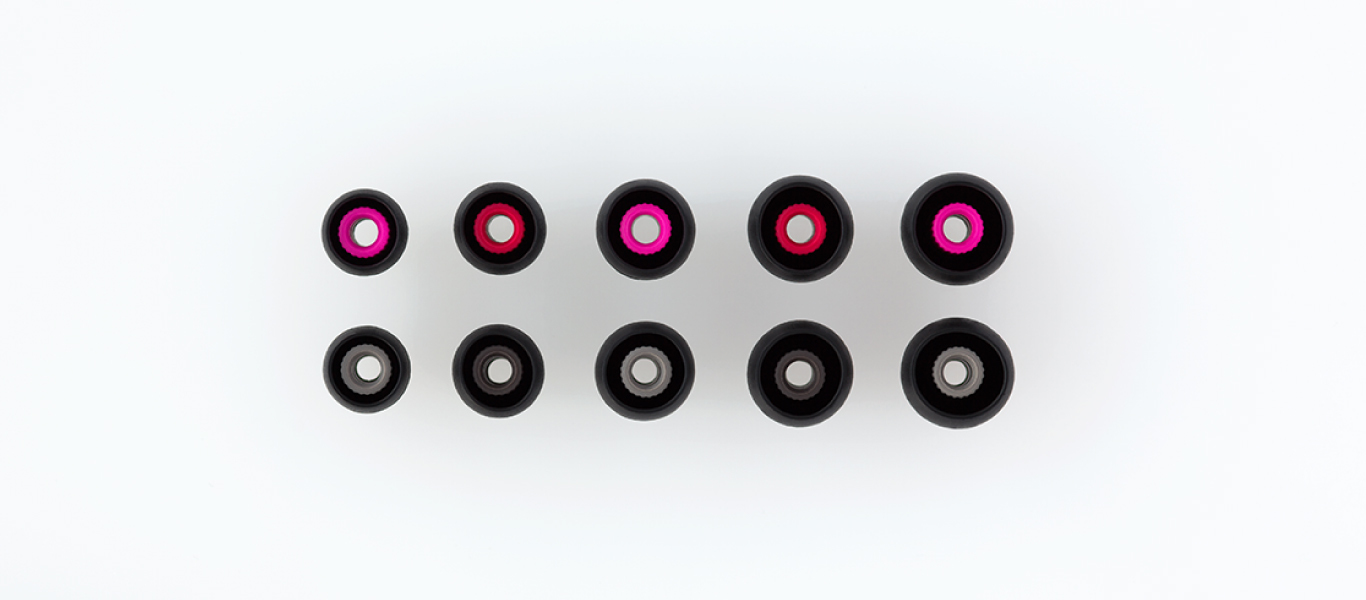
Available in 5 sizes - SS/S/M/L/LL
Ear hooks that reduce the noise of the cable
Similar products were designed to be adjustable to fit ears of different sizes; not only were they large, they were also visually too prominent and it took a lot of getting used to adjusting them.
After considering what the key to ear hook customization is, we discovered a shape that is smaller than existing ear hooks, that does not use metal or resin wires, and that fits more people's ears.
We've achieved something that's slim and doesn't feel foreign, providing a level of comfort that makes you forget you're wearing it. It's also easy to pair with a figure-of-eight cable.
Cable noise - the unpleasant sound created when the cable touches the user's body while walking - is drastically reduced.
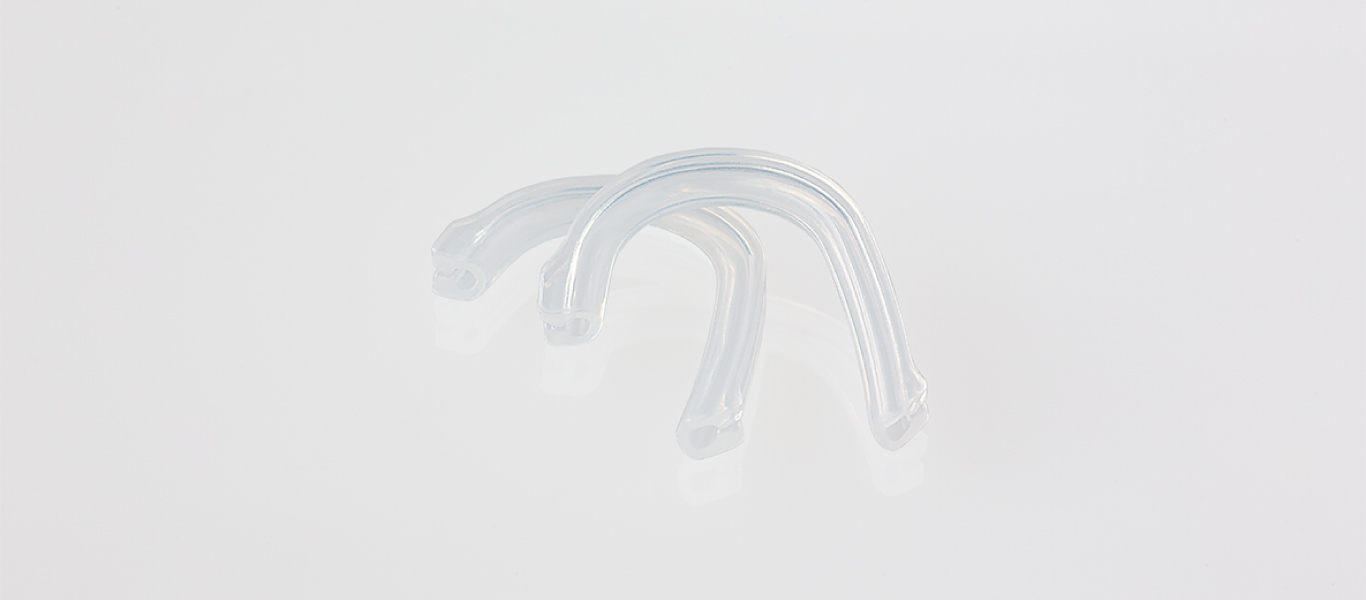
silicone carrying case
This silicone case allows the cables to be rolled up and easily stored. The earbuds themselves are gently secured by thin, dome-shaped silicone sleeves.
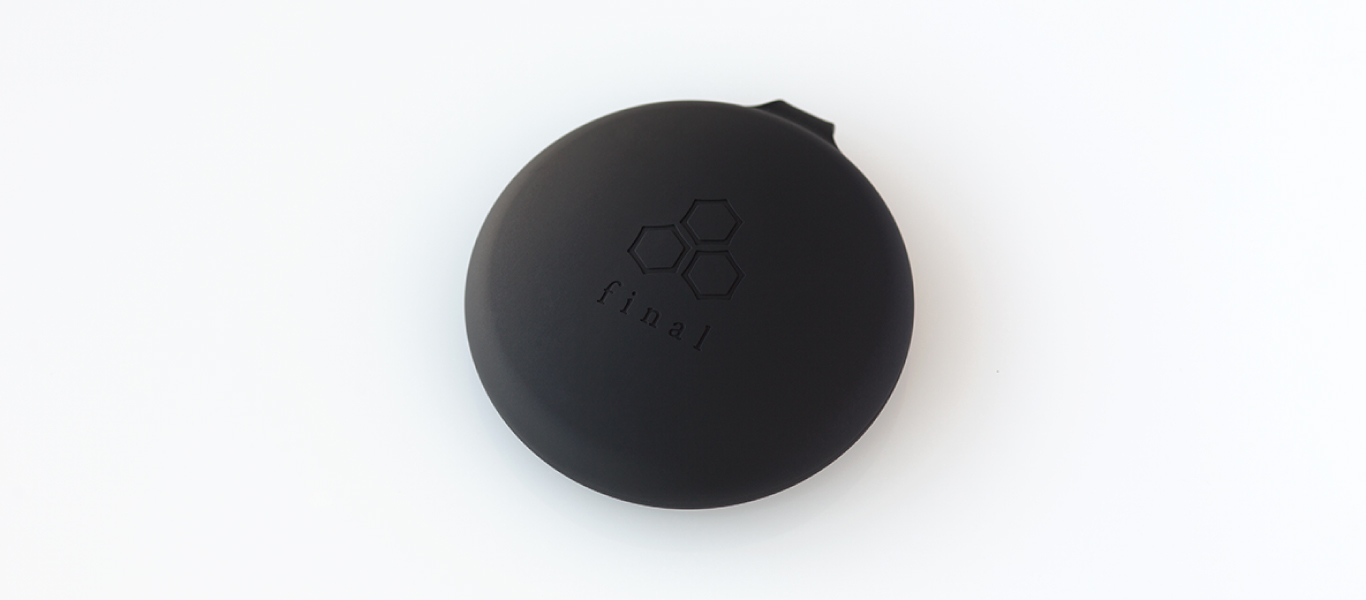
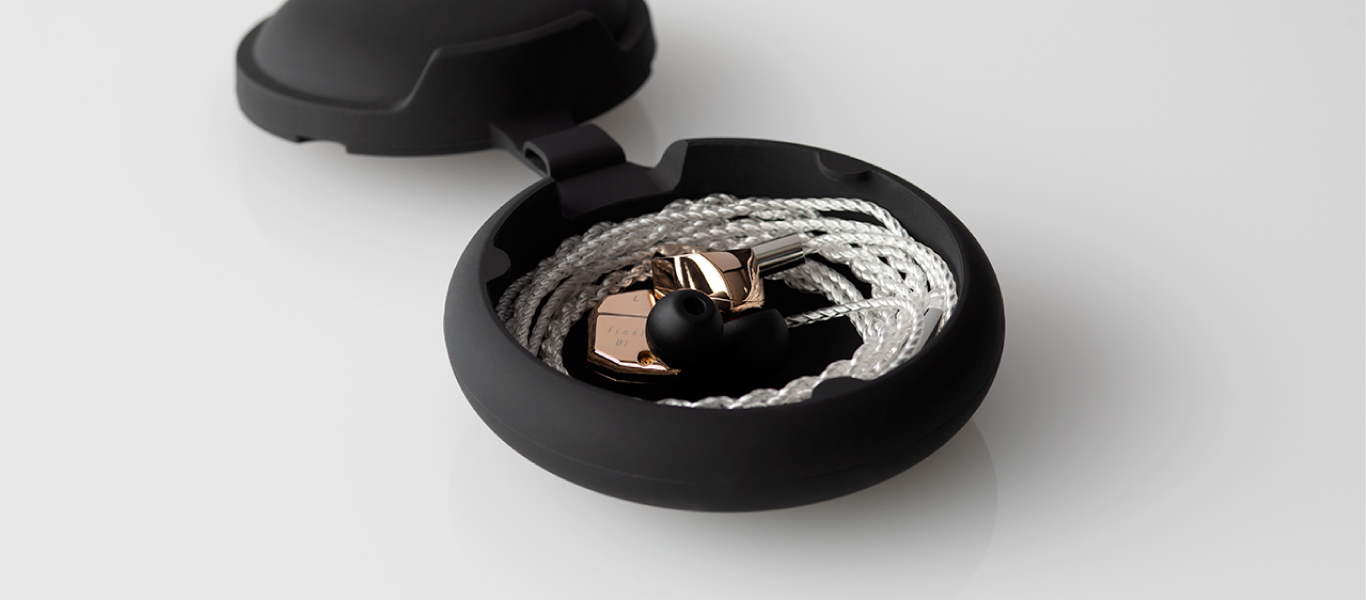
aging
Aging is a phenomenon in which sound changes with continued use over a period of time. A driver unit produces sound through the vibration of an extremely thin, heat-formed film.
The cause of this is unclear, but it is thought that the film becomes accustomed to the stress from the molding of the film or the stress from the adhesive when used for a long period of time, allowing tiny signals to be easily transmitted.
A long period of time is required for the aging effects to become imperceptible on this product. In general, after 150 to 200 hours of normal use, the sensitivity will increase to reach the level of sound quality for which the product was originally designed.
Technical data
- Product name: FI-B1BDSSD
- Case:Stainless steel, highly polished (rose gold)
- Driver: 1D+1BA (mains-independent)
- Connector: MMCX
- Cable:OFC silver-coated cable
- Sensitivity: 94dB
- Impedance: 13Ω
- Weight: 36g
- Cable length: 1.2m
Accesories
- silicone case
- Earpieces (Type E, 5 sizes)
- ear hooks



